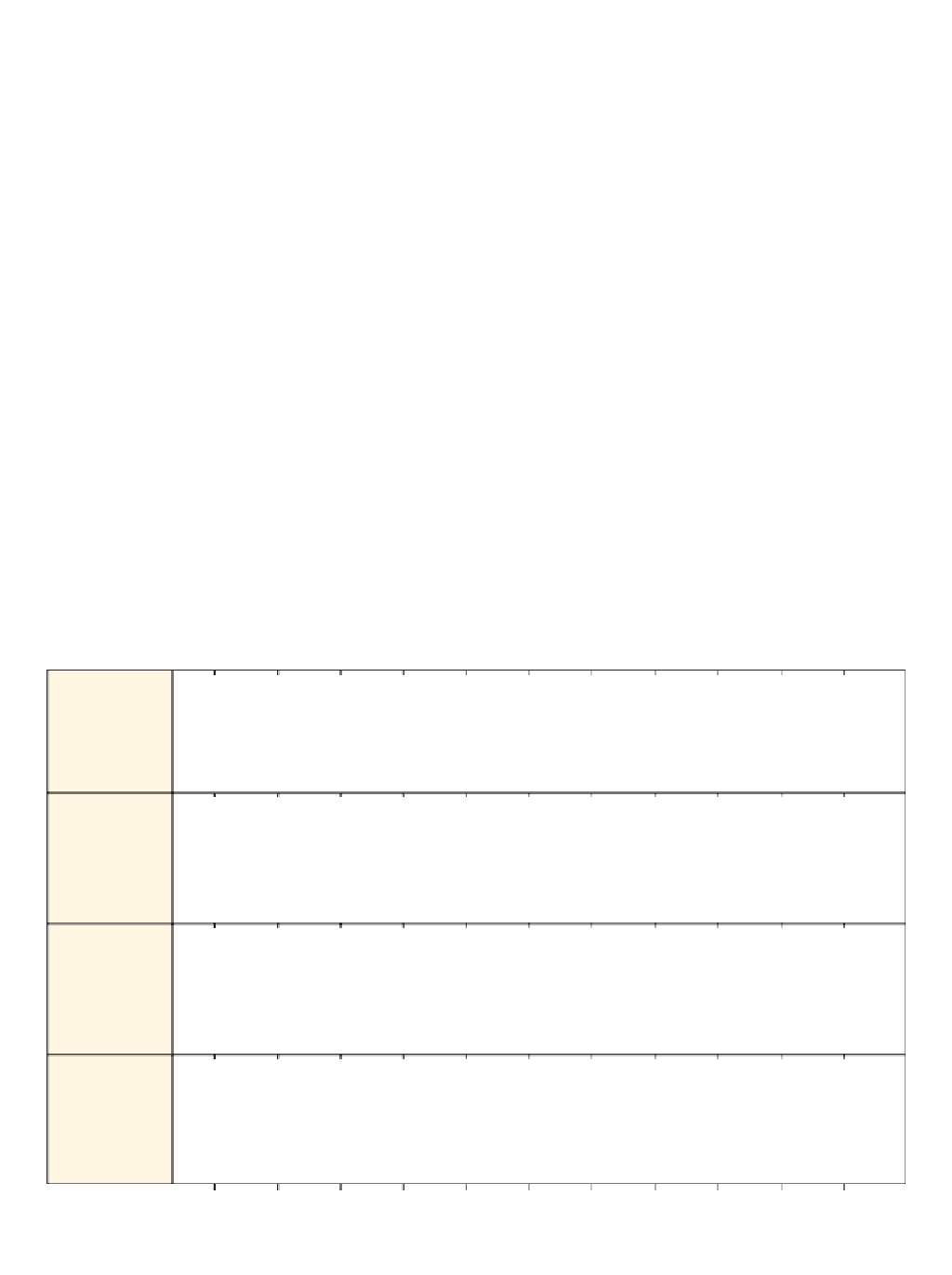Geoscience Reference
In-Depth Information
Kennedy: 'If I were asked to name a 'pure' earth scientist
who comes close to Darwin's breadth and intelligence of
problem solving, it would be Gilbert' (Kennedy 2006,
p. 86). Not least of Gilbert's legacies has been his influence
on the contributions by pioneering geomorphologists-
hydrologists in the second half of the twentieth century
such as Robert Horton, Stanley Schumm, Marie
Morisawa, Mark Melton, Richard Chorley, John Thornes
and Mike Kirkby.
The third revolution in the nineteenth century arose
from the work of William Morris Davis (1850-1934), of
Harvard University. His hypothesis of the pseudo-
Darwinian
Cycle of Erosion,
first proposed in 1889, came
to dominate geomorphology for the next sixty years. He
and his many disciples spent their careers trying to fit
landscapes into pigeonholes of youth, maturity and old
age, with the last being demarcated by a
peneplain
.A
favourite dictum was: 'landscape is a function of structure,
process and stage'. His model required speculations and
inferences about erosional features and the
denudation
chronology
which had produced them. The Davisian Cycle
is both deductive and didactic, and became popular for
several reasons; one was that the idea of recently uplifted
land being subject to extensive erosion to produce low
peneplains seemed feasible and applicable. Modifications
by ice, wind, tectonic activity and climate change were
accommodated as 'accidents' by Davis, which was also
appealing.
However, the twentieth century has witnessed several
paradigm shifts, not least the removal of the Davisian
approach from any serious treatment of geomorphology.
For example, Strahler (1950) remarks: 'Davis' treatment
appealed . . . to persons who have little training in basic
physical sciences, but who like scenery and outdoor life.
. . . As a branch of natural science it seems superficial
and inadequate.' It was Strahler and fellow Americans
Horton, Leopold and Schumm who were instrumental in
introducing mathematical and physical concepts and
techniques. Leopold, for example, used basic engineering
concepts to study river behaviour. The hallmarks of
twentieth-century physical geography became numeracy,
quantification, analysis of data by computer modelling,
physical, chemical and biological analysis in the labo-
ratory, and the use of satellite and airborne Earth
observation. Complementary developments of theory and
methodology in all branches of physical geography owe
much to a few key practitioners.
Figure 1.7
shows those
who have made significant contributions to the develop-
ment of the subject over the past 200 years. (Like BBC's
Desert Island Discs,
no apology should be made for this
Barbara Kennedy
Mike Kirkby
Arthur
Holmes
Arthur
Strahler
Richard
Chorley
Alfred
Wegener
Charles
Lyell
G.K. Gilbert
Earth History,
Geomorphology
and Hydrology
James Hutton
John Playfair
Sir Nicholas
Shackleton
William
Morris
Davis
Louis
Agassiz
Robert
Horton
Harry
Hess
Stephen Jay
Gould
Kenneth
Hare
Gordon
Manley
Vladimir
Köppen
Sir John
Houghton
Rudolf
Geiger
Climatology
Charles
Thomthwaite
J. Bjerknes
Ann
Henderson-Sellers
Hans
Jenny
Eugene
Odum
Derek
Ratcliffe
Sir Charles
Elton
Raymond
Lindeman
Sir Arthur
Tansley
Paul
Colinvaux
Justus
von Liebig
Frank
Clements
Sir Charles
Darwin
Biogeography
Alphonse
de Candolle
Edward
Wilson
Alfred
Wallace
Max Nicholson
Francis
Rose
Aldo
Leopold
Henry
David
Thoreau
John
Muir
Conservation
Rachel
Carson
Sir Ghillean
Prance
1800
1820
1840
1860
1880
1900
1920
1940
1960
1980
2000









































